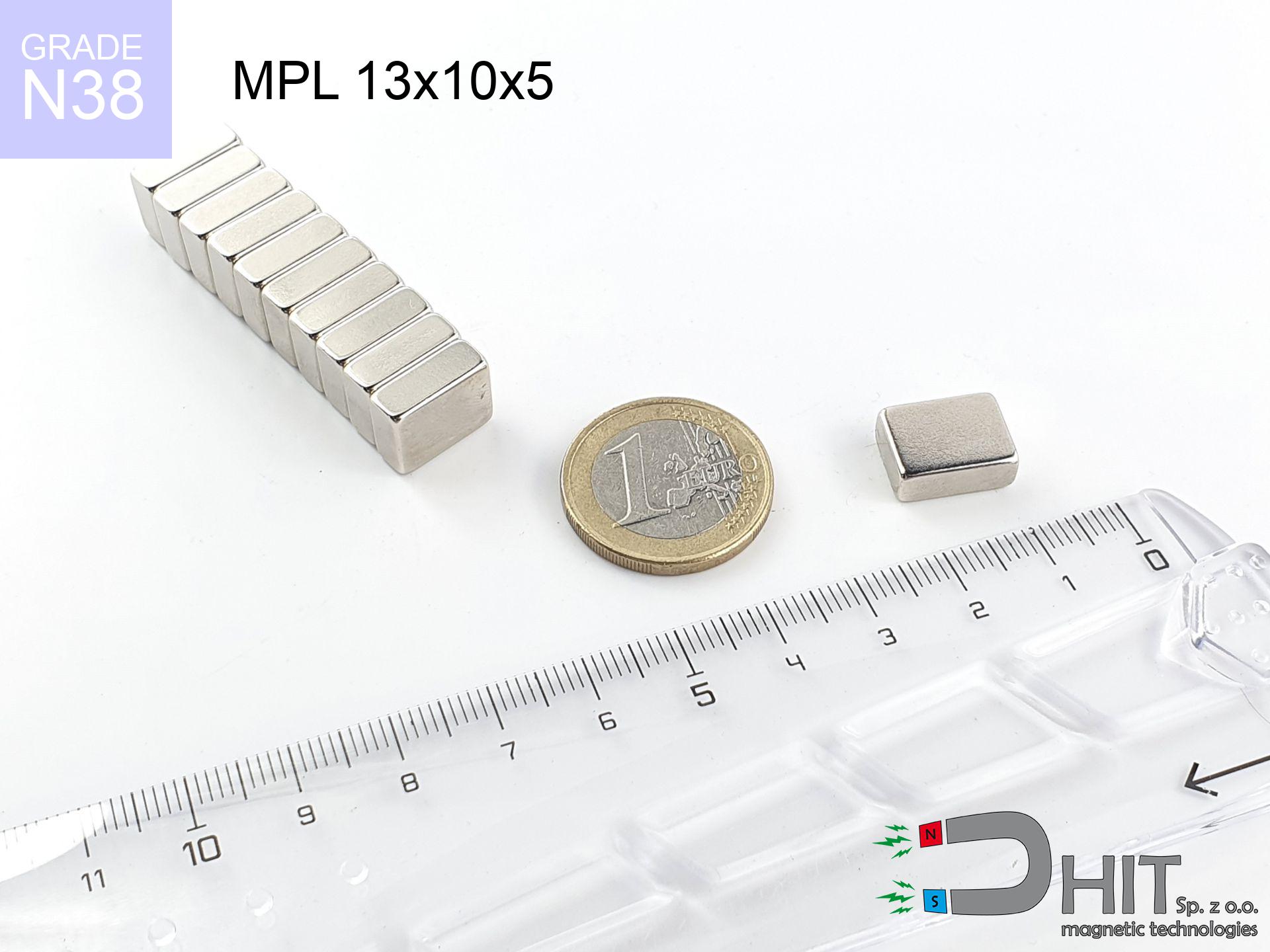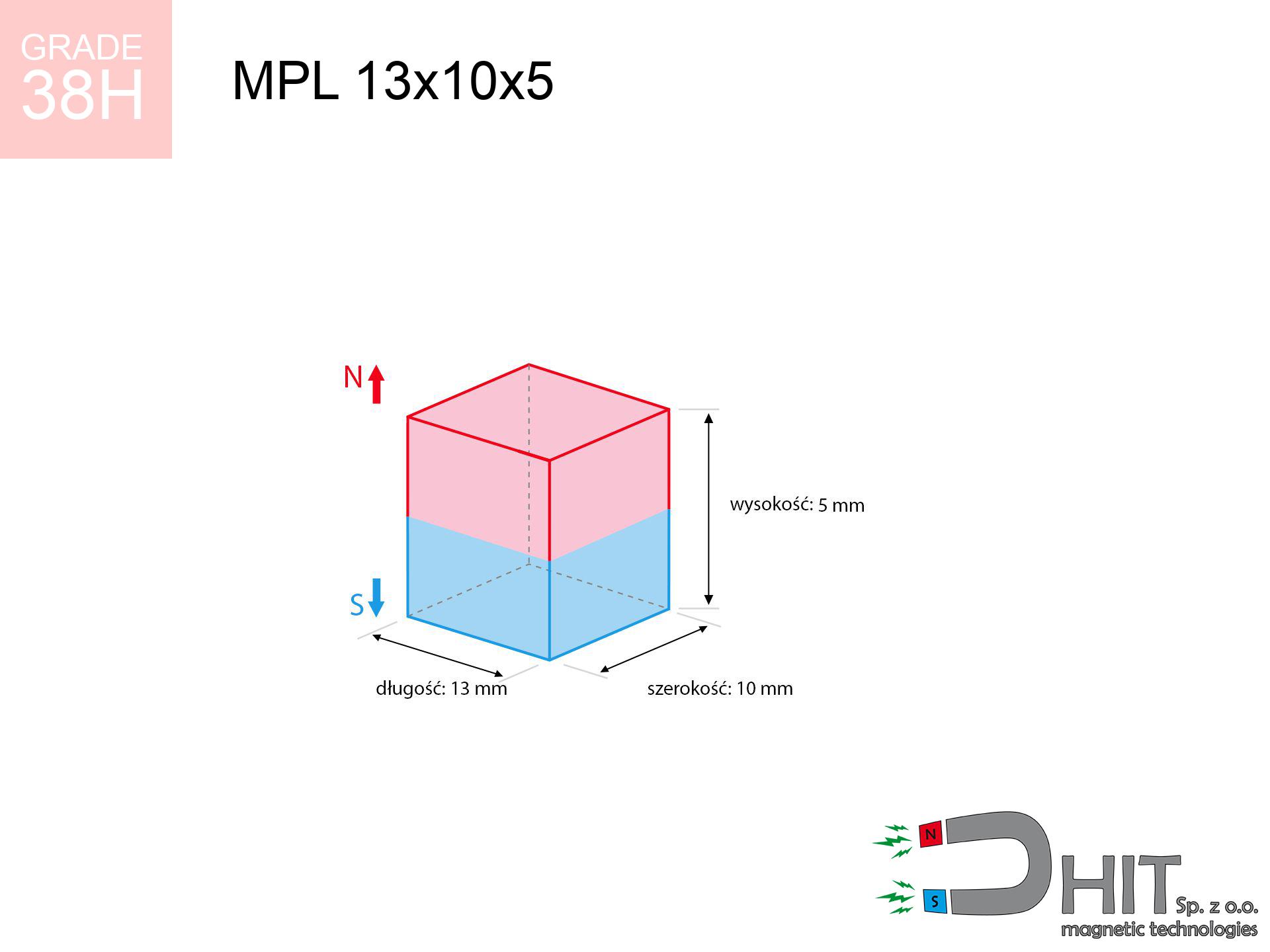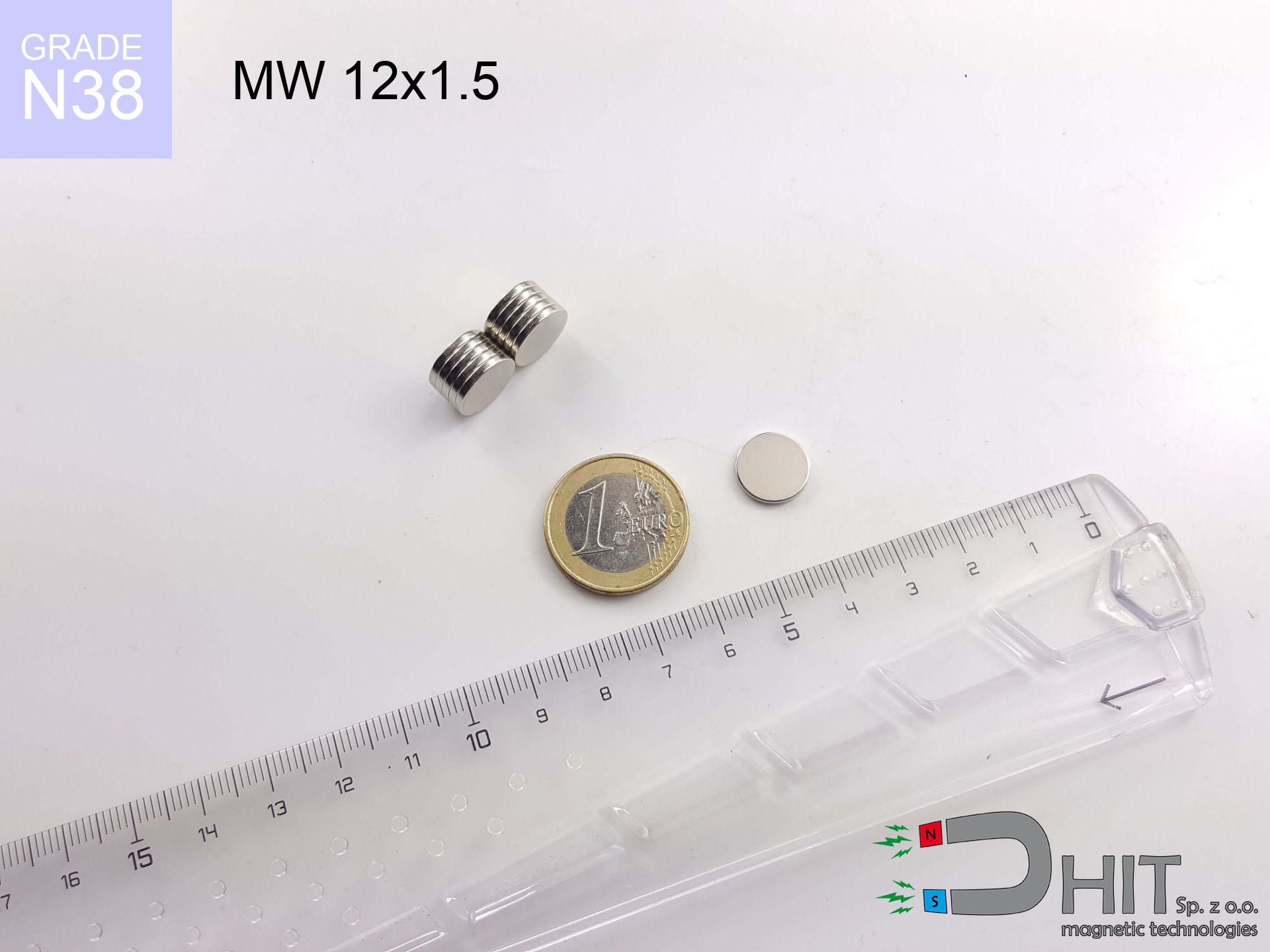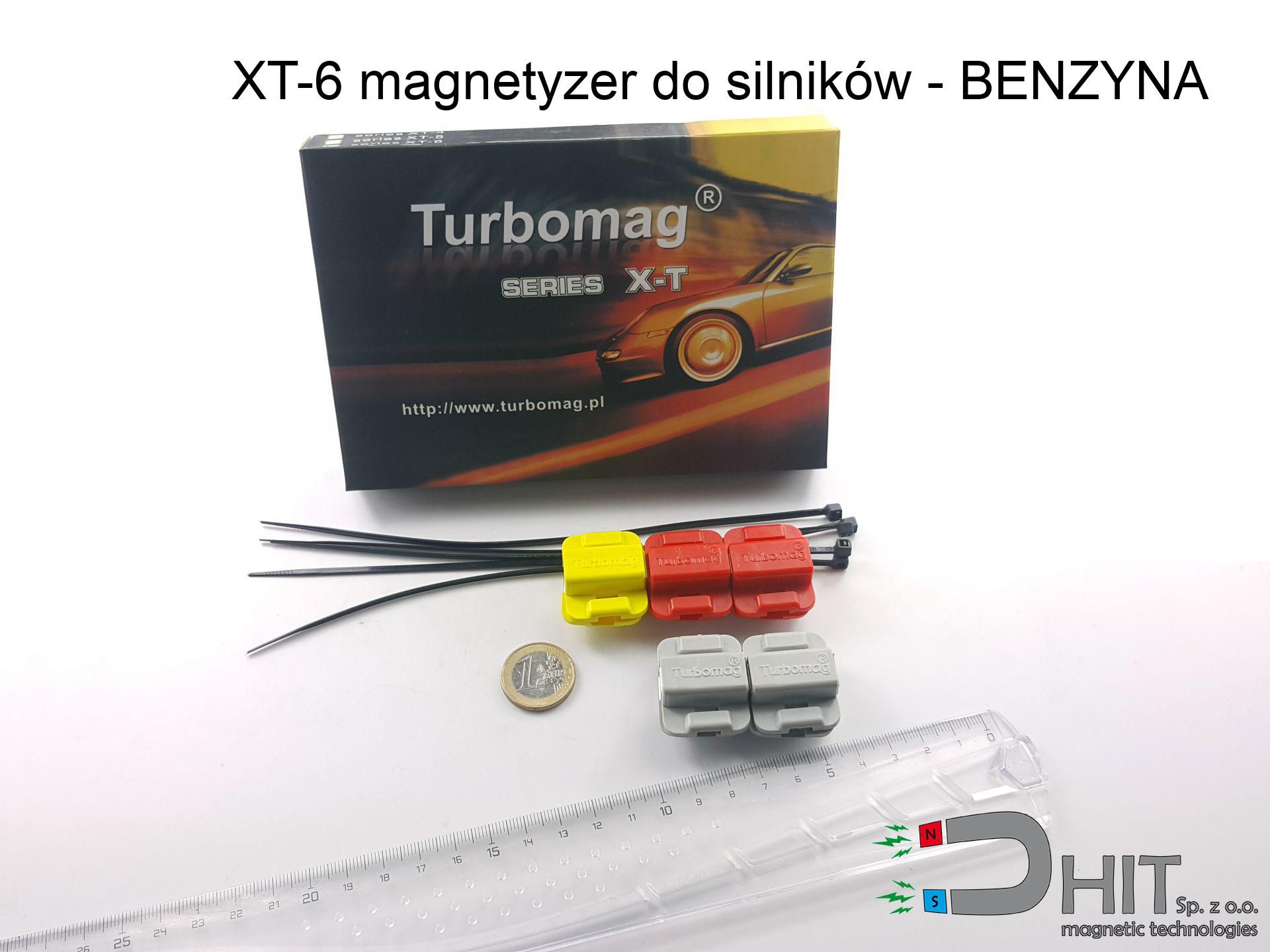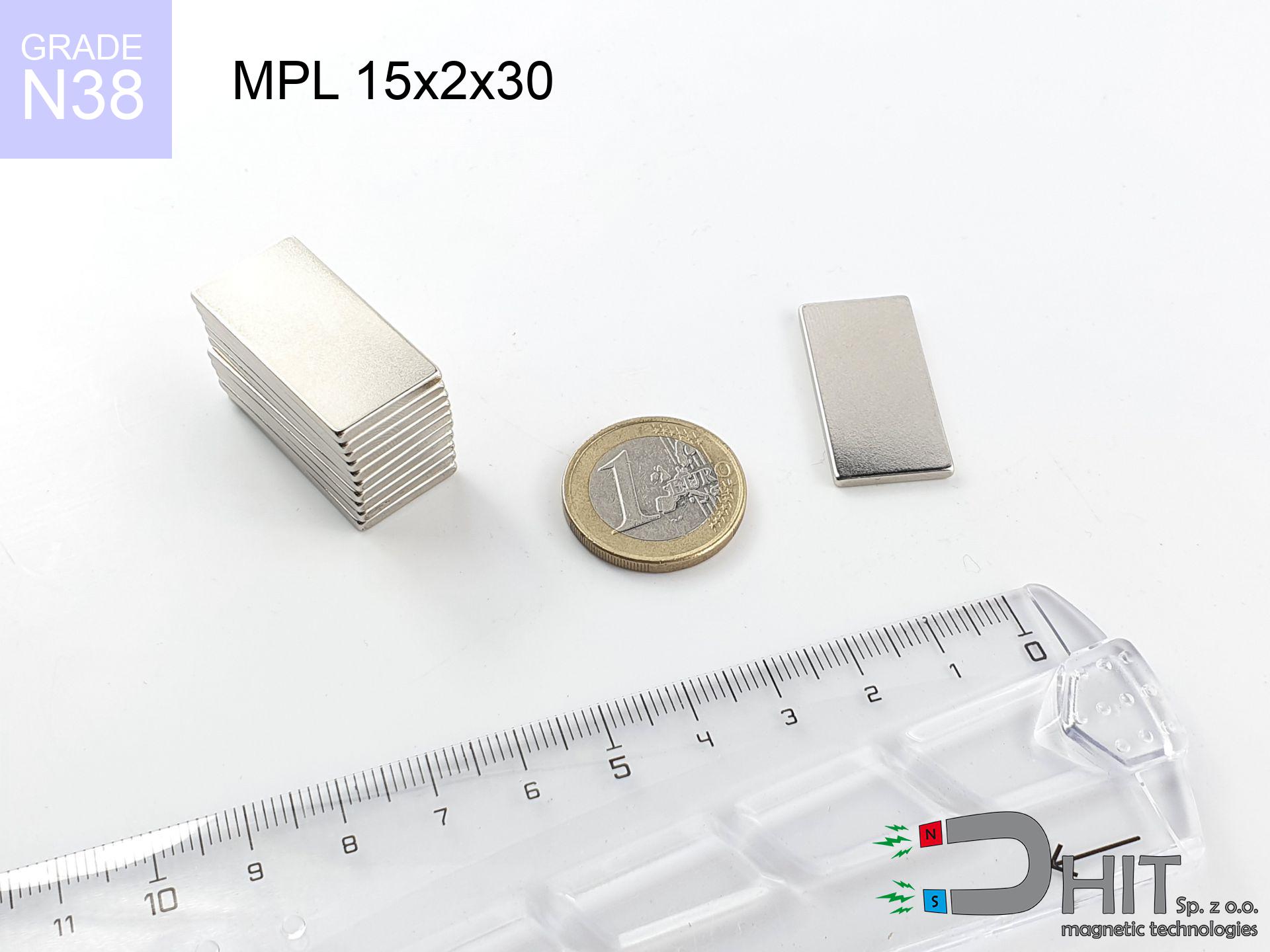MPL 13x10x5 / 35H - neodymium magnet
lamellar magnet
catalog number 020119
GTIN: 5906301811251
length
13
mm [±0,1 mm]
width
10
mm [±0,1 mm]
height
5
mm [±0,1 mm]
magnetizing direction
↑ axial
capacity ~
3.38 kg / 33.15 N
magnetic induction ~
369.32 mT / 3,693 Gs
max. temperature
≤ 120
°C
catalog number 020119
GTIN: 5906301811251
length
13 mm [±0,1 mm]
width
10 mm [±0,1 mm]
height
5 mm [±0,1 mm]
magnetizing direction
↑ axial
capacity ~
3.38 kg / 33.15 N
magnetic induction ~
369.32 mT / 3,693 Gs
max. temperature
≤ 120 °C
3.20 ZŁ gross price (including VAT) / pcs +
2.60 ZŁ net price + 23% VAT / pcs
bulk discounts:
need more quantity?Don't know what to choose?
Give us a call tel: +48 22 499 98 98 or contact us through form on the contact page. You can check the mass and the appearance of neodymium magnets in our force calculator magnetic calculator
Orders placed by 2:00 PM will be shipped on the same business day.
Specification: lamellar magnet 13x10x5 / 35H ↑ axial
Magnetic properties of the material 35H
Physical properties of sintered neodymium magnets Nd2Fe14B
Due to their power, flat magnets are frequently used in devices that need exceptional adhesion.
Most common temperature resistance of these magnets is 80°C, but with larger dimensions, this value can increase.
Moreover, flat magnets commonly have different coatings applied to their surfaces, e.g. nickel, gold, or chrome, to increase their strength.
The magnet labeled MPL 13x10x5 / 35H and a magnetic strength 3.38 kg weighing just 4.88 grams, making it the ideal choice for projects needing a flat magnet.
Contact surface: Thanks to their flat shape, flat magnets guarantee a greater contact surface with adjacent parts, which is beneficial in applications requiring a stronger magnetic connection.
Technology applications: These are often utilized in various devices, e.g. sensors, stepper motors, or speakers, where the flat shape is important for their operation.
Mounting: The flat form's flat shape makes mounting, especially when it is required to attach the magnet to some surface.
Design flexibility: The flat shape of the magnets gives the possibility creators a lot of flexibility in arranging them in structures, which is more difficult with magnets of more complex shapes.
Stability: In some applications, the flat base of the flat magnet can provide better stability, reducing the risk of sliding or rotating. However, one should remember that the optimal shape of the magnet depends on the specific application and requirements. In certain cases, other shapes, like cylindrical or spherical, are a better choice.
Magnets have two main poles: north (N) and south (S), which attract each other when they are oppositely oriented. Similar poles, e.g. two north poles, act repelling on each other.
Thanks to this principle of operation, magnets are regularly used in magnetic technologies, such as motors, speakers, sensors, or magnetic locks. Neodymium magnets stand out with the greatest strength of attraction, making them indispensable for applications requiring strong magnetic fields. Moreover, the strength of a magnet depends on its size and the materials used.
It’s worth noting that high temperatures can weaken the magnet's effect. Every magnetic material has its Curie point, meaning that under such conditions, the magnet stops being magnetic. Additionally, strong magnets can interfere with the operation of devices, such as compasses, magnetic stripe cards or medical equipment, like pacemakers. For this reason, it is important to avoid placing magnets near such devices.
Recommended articles for purchase
Advantages and disadvantages of neodymium magnets NdFeB.
Apart from immense strength, neodymium magnets have the following advantages:
- They do not lose their power (of the magnet). After about 10 years, their power decreases by only ~1% (theoretically),
- They are highly resistant to demagnetization by external magnetic field,
- In other words, thanks to the shiny coating of nickel, gold, or silver, the element acquires an aesthetic appearance,
- They have exceptionally high magnetic induction on the surface of the magnet,
- Thanks to their high temperature resistance, they can operate (depending on the shape) even at temperatures up to 230°C and above...
- The ability for precise shaping and customization to specific needs – neodymium magnets can be produced in a wide range of shapes and sizes, which expands the range of their possible uses.
- Key role in the industry of new technologies – are utilized in hard drives, electric motors, medical devices and other highly developed apparatuses.
Disadvantages of neodymium magnets:
- They are prone to breaking as they are fragile when subjected to a strong impact. If the magnets are exposed to impacts, we recommend using magnets in a steel housing. The steel housing in the form of a holder protects the magnet from impacts and simultaneously increases its overall strength,
- High temperatures can reduce the strength of neodymium magnets. Typically, after heating above 80°C, most of them experience a permanent loss in strength (although it is dependent on the form and size). To prevent this, we offer special magnets marked with the symbol [AH], which are highly resistant to high temperatures. They can operate even at temperatures up to 230°C, making them an ideal solution for applications requiring high-temperature operation,
- Due to their susceptibility to corrosion in a humid environment, we recommend using waterproof magnets made of rubber, plastic, or other moisture-resistant materials when using them outdoors,
- The use of a cover or a magnetic holder is recommended due to the limited possibilities of manufacturing threads or complex shapes in the magnet
- Possible danger to health from tiny fragments of magnets can be dangerous, in case of ingestion, which is particularly important in the context of child safety. Additionally, tiny parts of these devices are able to be problematic in medical diagnosis when they are in the body.
Be Cautious with Neodymium Magnets
Keep neodymium magnets as far away as possible from GPS and smartphones.
Intense magnetic fields generated by neodymium magnets interfere with compasses and magnetometers used in navigation, as well as internal compasses of smartphones and GPS devices.
Neodymium magnets are over 10 times stronger than ferrite magnets (the ones in speakers), and their power can shock you.
On our website, you can find information on how to use neodymium magnets. This will help you avoid injuries and prevent damage to the magnets.
Keep neodymium magnets far from children.
Neodymium magnets are not toys. You cannot allow them to become toys for children. Small magnets pose a serious choking hazard or can attract to each other in the intestines. In such cases, the only solution is to undergo surgery to remove the magnets, and otherwise, it can even lead to death.
Magnets made of neodymium are delicate and can easily break as well as shatter.
Magnets made of neodymium are highly fragile, and by joining them in an uncontrolled manner, they will crack. Magnets made of neodymium are made of metal and coated with a shiny nickel, but they are not as durable as steel. In the event of a collision between two magnets, there may be a scattering of fragments in different directions. Protecting your eyes is crucial in such a situation.
Dust and powder from neodymium magnets are flammable.
Avoid drilling or mechanical processing of neodymium magnets. If the magnet is crushed into fine powder or dust, it becomes highly flammable.
Do not place neodymium magnets near a computer HDD, TV, and wallet.
Magnetic fields generated by neodymium magnets can damage magnetic storage media such as floppy disks, credit cards, magnetic ID cards, cassette tapes, video tapes, or other similar devices. They can also damage televisions, VCRs, computer monitors, and CRT displays. You should especially avoid placing neodymium magnets near electronic devices.
Neodymium magnets can demagnetize at high temperatures.
Although magnets have demonstrated their effectiveness up to 80°C or 175°F, the temperature can vary depending on the type, shape, and intended use of the specific magnet.
Neodymium magnets are primarily characterized by their significant internal force. They attract to each other, and any object that comes in their way will be affected.
Magnets attract each other within a distance of several to around 10 cm from each other. Remember not to insert fingers between magnets or in their path when attract. Magnets, depending on their size, are able even cut off a finger or alternatively there can be a severe pressure or even a fracture.
Keep neodymium magnets away from people with pacemakers.
Neodymium magnets produce strong magnetic fields that can interfere with the operation of a heart pacemaker. Even if the magnetic field does not affect the device, it can damage its components or deactivate the entire device.
Avoid contact with neodymium magnets if you have a nickel allergy.
Studies show a small percentage of people have allergies to certain metals, including nickel. An allergic reaction often manifests as skin redness and rash. If you have a nickel allergy, try wearing gloves or avoid direct contact with nickel-plated neodymium magnets.
Please read the article - What danger lies in neodymium magnets? You will learn how to handle them properly.


